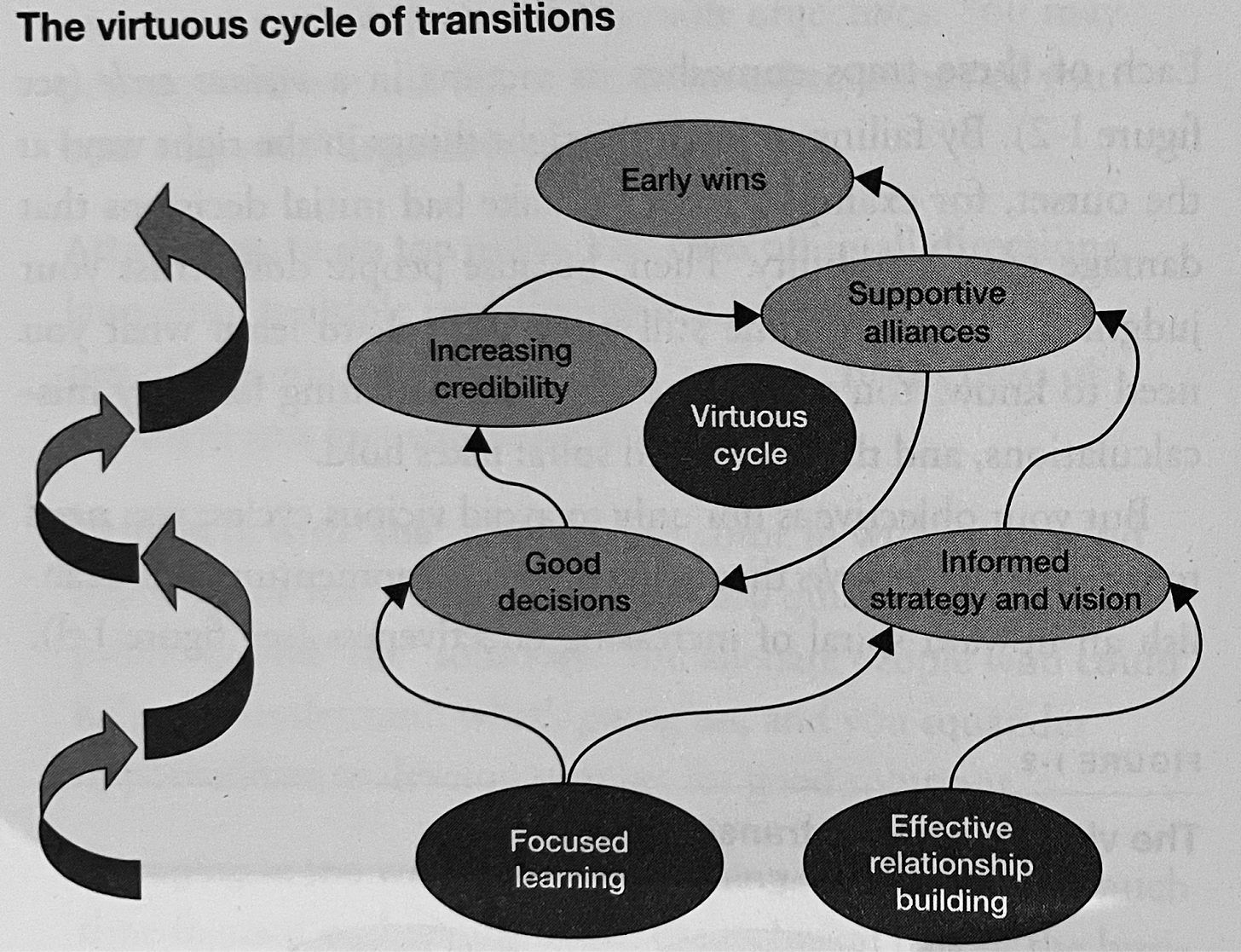Transforming Onboarding: The Road to Success through the Virtuous Cycle
In the earlier post, we have seen the common traps new employees fall into and thus fail to successfully transition into new roles at various companies.
Every employee wants to be successful and should be set up for success. To achieve this, the objective is not to avoid the vicious cycle but to create a virtuous cycle.
So, how do we create one?
The most important principle for a new employee is securing early wins. To be able to get these early wins, let’s look at the essential transition tasks which will create momentum and will propel the employee to greater success.
Prepare yourself: this means taking a mental break from our old job and preparing to take charge in the new one. The dangers of sticking with what we know, working very hard at doing it, and failing miserably are very real.
Accelerate your learning: this means understanding an organization's markets, products, technologies, systems, and structures as well as its culture and politics.You must go systematic on how to learn effectively.
Match your strategy to the situation: different types of situations require us to make significant adjustments in how you plan for and execute our transition.
Secure early wins: this will help build credibility and momentum. In the first few weeks, we need to identify opportunities to build personal credibility. In the first 90 days, we need to identify ways to create value and improve business results that will help you get to the break-even point more rapidly.
Negotiate Success: we need to figure out how to build a productive working relationship with your new boss and manage her expectations. This mean carefully planning for a series of critical conversations about the situations, expectations, working style, resources and our own personal development. Crucially it means developing and gaining consensus on our 90-day plan.
Achieve alignment: the higher we rise in an organisation, the more we must play the role of organisational architect.
Build your team: our willingness to make the tough early personal calls and our capacity to select the right people for the right positions are among the most important drivers of success during our transition and beyond.
Create coalitions: our success depends on our ability to influence people outside of our direct line of control. We need to identify those whose support is essential for our success and figure out how to line them up on our side.
Keep our balance: the risk of losing perspective, becoming isolated, and making bad calls are ever present during transitions. The right advice and counsel network is an indispensable resource.
Accelerate everyone: Finally, we need to help all those in our organisation, direct reports, bosses and peers. The quicker we get our new direct reports up to speed the more we will help our own performance.
Here’s the virtuous cycle Michael Watkins proposes.
As you can see, each activity in the above cycle feeds itself into a tiny victory which feeds into another tiny victory and so on. It’s a reinforcing loop that helps secure early wins and build on the momentum.
This way, a new employee can avoid getting into the common traps of transition and can build momentum and achieve greater success.

